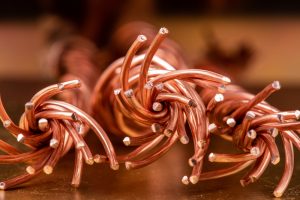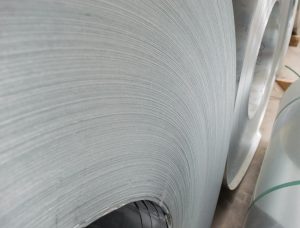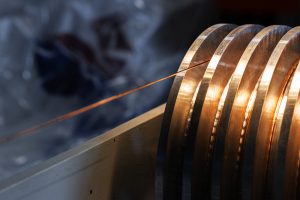E-bike sales are soaring all around the world. With the pandemic, people have drawn their attention towards long-term health, outdoor activities, and ways of keeping entertained while social distancing. Thus, many of us have picked up biking to keep ourselves company. Statistics from NPD show a staggering 240% increase in e-bike sales from 2020 to July 2021 in the US.
The e-bike industry has undergone significant advances during the past decade. The big players in the automotive field like Bosch and Yamaha have made significant contributions. Riders now have a lot of options with very few compromises. E-bike enthusiasts, hobbyists, and freestylers are always on the lookout for opportunities to push the envelope of power and speed. Over the past few years, companies and other third parties are manufacturing e-bike hardware and conversion kits that have fueled the excitement in enthusiasts.

The battery is one of the core components of a bike and directly correlates with the power, speed, and range of an e-bike which is why it is an area that engineers and enthusiasts like to tweak and fine-tune.
One of the common questions that arise is the usage of the material for batteries. In this article, we will be answering whether copper wires or nickel strips are ideal for 18650 e-bike batteries.
E-bike batteries

E-bike batteries have come a long way since the earliest days of e-bikes. Starting from Lead batteries that got up to a life span of 300 charge cycles, today Li-ion batteries can hold up to 1000 charge cycles. When it comes to e-bike batteries companies pay a lot of attention to details, and it is probably the most researched and upgraded element in e-bikes.
- The size of batteries is a crucial detail because you are looking to keep e-bikes at a low weight while packing the highest power. There are also constrictions in space since your design has to work alongside the bicycle frame.
- Charge time is a massive concern for e-bike riders. Companies have made significant improvements in this aspect, and now an average e-bike takes under 6 hours to be fully charged. Similar to other consumer electronics charging time can never get too low. A lot of research goes into this charging aspect because users always get hooked on products that juice up the fastest
- Safety of batteries – This is a no-brainer. E-bikes riders can pack over 500W of power right under their body. Sometimes DIY projects crank the power well above 4kW. High energy battery packs can pose serious safety concerns like they recently did in New York during the pandemic. In New York, the incidents of e-bike fires this year were double that of last year and included 75 incidents with 72 injuries and 3 deaths.
The top companies in the e-bike industry set very high standards in their battery production stages. For DIY e-bike makers, it is vital to know how the above factors are affected when making decisions on battery connections, layout, materials, etc.
The 18650 e-bike battery

18650 is the widely used battery for e-bikes these days. These 18650 batteries go in laptops and other rechargeable devices. Companies manufacture the battery packs on a large scale with the help of automatic CNC spot welding machines. 18650s come in all sorts of capacities, voltages, and qualities while they are relatively cheap, which is why they are pretty prevalent among DIY electric bicycle makers.
The most critical ratings that you need to look out for when selecting 18650 batteries are:
- Capacity – The capacity of a battery is denoted in Amp-hours, and it gives an idea about the maximum energy that will be drawn from a charge cycle. So higher the capacity, the longer the battery life, provided all the other conditions remain the same.
- Voltage – The voltage of a standard 18650 is typically indicated on the surface of the battery and can vary between 2.5V to 4.2V.
- Maximum discharge current – It is the maximum current that can be drawn without damaging the battery. Your circuit should function within this limit under all working conditions. This rating varies between different manufacturers and is a critical factor when designing battery connections for e-bikes.
These ratings and your battery arrangement will allow you to determine what range of current your e-bike will be drawing under different pedal assist levels. Knowing the amount of current is the most decisive factor when choosing copper wires or nickel strips as connectors.
Copper wires over nickel strips

Both copper wires and nickel strips are used as 18650 connectors in various applications.
The following comparison between copper and nickel will help you make an informed decision for your e-bike battery configuration.
- Copper is cheap and readily available. On the other hand, nickel strips are significantly more expensive.
- Copper has very high conductivity thus low resistivity. Nickel is 5x more resistive than copper. The resistivity tells us about the difficulty for current to pass through, therefore it is a good indication of the amount of energy wasted (heat generated) as current passes through a material.
- Nickel has good corrosion resistance, hence used a lot for alloying metals and as coatings for alloy wheels, coins, etc. Copper has a lower resistance to corrosion and usually requires a protective coating for applications that require durability.
- Copper is difficult to spot weld as it requires a lot of heat. Spot welding is the widely used mechanism to connect 18650 batteries. Spot welding with Nickel results in a stronger weld compared to copper.
Copper and Nickel have their pros and cons. It’s about weighing out your options and prioritizing your requirements.
When to choose copper wires for a 18650 battery?

There are several cases where using copper wires could be advantageous. Here are a few scenarios where you might want to consider using copper.
- If your circuit is drawing a high current from the 18650 cells then copper wires would be good. Having low resistivity connectors like copper means the pack will not heat as much as it would with Nickel. Overheating is one of the main reasons for the decline in battery performance and fires. The rule of thumb is that if each battery in your setup is drawing over 7A then copper does a better job than Nickel.
- You have a plan for how you are going to bind the batteries to the copper wires. As mentioned previously spot-welding is not going to work with copper wires. Unless you have experience soldering copper wires to 18650 batteries successfully then soldering is out of the question. If you are not careful, the excessive heat could most certainly cause irreparable damage to the internal compounds and thereby reduce the capacity and charge cycles of the battery. The recommended/safer option is to use magnets to clip the copper onto the battery terminals. People have posted such builds using Neodymium magnets on forums so they could be a good source of information for your build.
- Of course, the budget should be the last thing on your mind when working with e-bike battery packs. Nevertheless, copper is the cheapest option out of the two, and it should be easy to find copper wires.
Concerns when using copper wires for 18650 battery

If you believe copper wires would be a good fit for your project based on the essential factors discussed in the preceding topics, then these tips would come in handy for your build.
- Choose the right size for the amperage. If too large currents run through the wires it could heat the entire pack and cause detrimental damage to the batteries. Refer to the wire gauge current ratings chart published by the manufacturer of your respective wire. You should pick the gauge that has a maximum current load rating above the maximum current your circuit extracts.
- Use new copper wires for your connections. Corrosion is one of the major causes of the accelerated drop in battery performance and reduced lifetime. As discussed earlier copper wires are less resistant to corrosion in air, therefore avoid using copper wires that have been hanging around for too long.
Conclusion

18650 batteries are now in every DIYer’s arsenal. They are frequently incorporated in electronic projects like e-bikes, robotics, and other wireless builds. Nickel strips have been the prominent choice of connectors owing to their characteristics. Nickel strips are easier to weld using commercial spot welders and show higher resistance to corrosion, hence producing a durable connection between batteries. With high power projects that draw over 7 Amperes through a single 18650, you could go for copper wire connections as an alternative to prevent excessive heat generation. Copper wires are a viable option, provided you have a method to attach them to the terminals of batteries. Spot welding doesn’t do a satisfactory job with copper. Soldering can damage batteries if not done with precision. As long as you reasoned out the particular factors it is okay to use copper wires instead of nickel strips, and it may even possibly be the better option.
